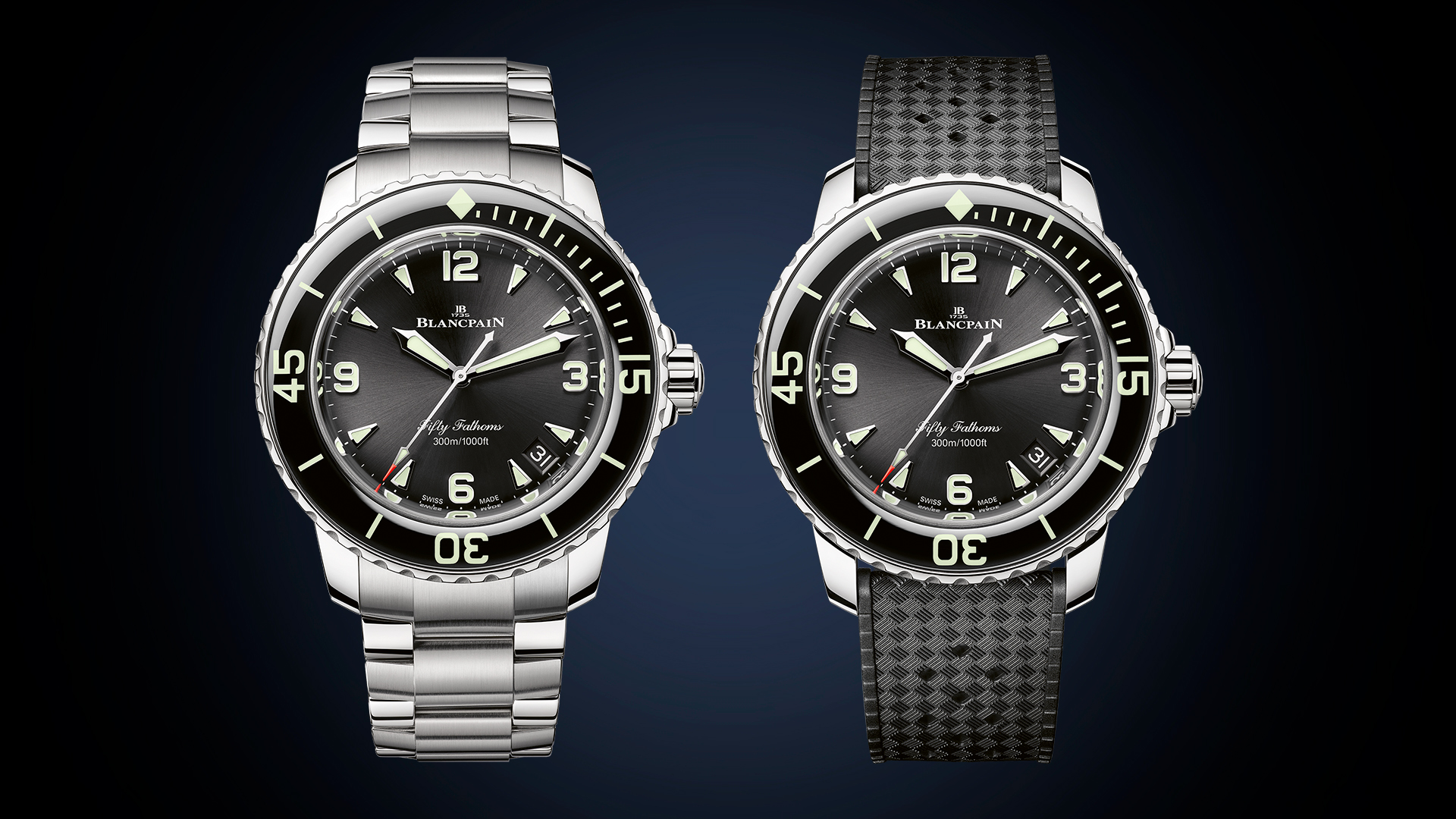150 Years Strong: Audemars Piguet Reveals a Visionary Timepiece Collection for 2025


This year, Audemars Piguet marks 150 years of revolutionising watchmaking, rewriting the rules of haute horlogerie and transforming time into a masterpiece. Born in the heart of Switzerland’s Vallée de Joux, the brand has evolved from being a quiet workshop in Le Brassus to turning into a global icon of innovation.
To celebrate its 150th anniversary, Audemars Piguet has unveiled its 2025 collection in the legendary Bleu Nuit, Nuage 50 hue; it comprises Royal Oak, Royal Oak Offshore, and Code 11.59 variants. The latest collection also introduces the highly anticipated Calibre 7138, a testament to AP’s enduring commitment to mechanical innovation and uncompromising craftsmanship. GMT India takes a closer look at the horological marvels on offer.
A Royal Oak Trilogy in Bleu Nuit, Nuage 50
Audemars Piguet has unveiled three Royal Oak novelties — Double Balance Wheel Openworked (Ref. 15416CD.OO.1225CD.01), Offshore Selfwinding Chronograph (Ref. 26238CD.OO.1300CD.01), and Offshore Selfwinding Chronograph Automatique (Ref. 26420SO.OO.A029VE.01) — in Bleu Nuit, Nuage 50. Recreating this blue colour is a complex process, as the shade varies depending on the duration and temperature of the galvanic bath. Today, Bleu Nuit, Nuage 50 dials are obtained using a PVD (Physical Vapour Deposition) process to ensure a homogeneous shade.
Royal Oak Double Balance Wheel Openworked

The 41 mm model gets a Bleu Nuit, Nuage 50 ceramic case, a bezel with eight screws, a crown, and an inner bezel. This monochromatic aesthetic allows the rhodium-toned openworked movement, placed at the dial level below the sapphire crystal, to take centre stage. The model gets pink gold hour, minute second hands and hour markers.

Powered by self-winding Calibre 3132, this timepiece features the double balance wheel mechanism and two hairsprings assembled on the same axis; the system oscillates in synchrony offering a 45-hour power reserve. Turning the watch showcases the sapphire caseback with the openworked bridges, revealing some components of the gear train. Modern technologies, such as CNC (computer numerical control) machining, and manual craftsmanship, including polished V-angles, have been blended beautifully to create this piece. This model is finished on a Bleu Nuit, Nuage 50 ceramic bracelet with a titanium AP folding clasp.
Royal Oak Offshore Selfwinding Chronograph

The 42 mm model has a Bleu Nuit, Nuage 50 ceramic case, a bezel with eight hexagonal screws in stainless steel, chronograph pushers at 2 o'clock and 4 o'clock, and a crown at 3 o'clock with a titanium crown chip; an inner bezel houses a tachymeter scale. The Méga Tapisserie dial has luminescent 18 ct white gold hour, minute, and central second hands, and hour markers. The chronograph counters retain the collection’s emblematic vertical alignment, displaying 12 hours at 12 o’clock, 30 minutes at 9 o’clock, a small seconds at 6 o’clock, and a date window at 3 o’clock.

The watch beats to the rhythm of Calibre 4404, an integrated self-winding chronograph with a column wheel and flyback function that allows it to restart instantly without having to stop or reset it first; a 70-hour power reserve is delivered. Turning the watch showcases the sapphire caseback with a pink gold oscillating weight. The watch is finished on a new Bleu Nuit, Nuage 50 ceramic bracelet with a titanium AP folding clasp.
Royal Oak Offshore Selfwinding Chronograph Automatique

The 43 mm novelty boasts a two-toned design, combining stainless steel with Bleu Nuit, Nuage 50 ceramic on the bezel, the pushers at 2 o'clock and 4 o'clock, and the crown at 3 o'clock, for a colour contrast that extends to the dial. The Bleu Nuit, Nuage 50 Méga Tapisserie pattern dial has 18 ct white gold hour, minute, and central second hands, and hour markers filled with luminescent material. The chronograph indications and tachymeter scale are printed in white.

The timepiece features a 30-minute counter at 9 o’clock, an hour counter at 3 o’clock, and a small seconds counter at 6 o’clock, all of which are rendered in a lighter blue hue; the white gold AP monogram is displayed at 12 o’clock and a date window at 4:30. This model is powered by Calibre 4401 with a 70-hour power reserve. The caseback’s sapphire crystal reveals the flyback chronograph movement’s refined decorations along with the rhodium-toned 22 ct pink gold oscillating weight. Mounted on a textured calfskin leather strap matching the ceramic’s hue, this model is equipped with the interchangeability system and comes with an additional blue rubber strap emphasising the collection’s sportive identity.
Royal Oak Offshore Selfwinding Chronograph
Audemars Piguet has revealed two novelties in this lineup: a 43 mm version (Ref. 26420CE.OO.A063VE.01) and a 42 mm version (Ref. 26238CE.OO.1300CE.02). Both models come in black ceramic cases.

The first model boasts a 43 mm black ceramic case with a bezel, a crown, and pushers at 2 o'clock and 4 o'clock in green ceramic. In keeping with the three-tone design of the case, the dial combines the latest generation Méga Tapisserie pattern in dark green PVD with a black inner bezel housing the tachymeter scale, matching snailed counters at 3 o'clock for a 12-hour subdial, 6 o'clock for a running seconds counter, 9 o’clock for a 30-minute counter, and a date window at 4:30. The 18 ct white gold hour, minute, and central second hands, and hour markers are filled with luminescent material, and are rendered in a silver-grey shade. Calibre 4401 powers this watch and offers a 70-hour power reserve. Turning the watch showcases the sapphire caseback with a dark grey 22 ct pink gold oscillating weight. Equipped with the interchangeable strap system, this chronograph is completed by a dark green textured leather strap and comes with an additional black rubber strap.

The next watch in the lineup has a 42 mm black ceramic case and a bezel with eight hexagonal screws in steel. On the dial, one can find the latest generation Méga Tapisserie pattern, along with an inner bezel, snailed counters at 6 o'clock for running second, 9 o'clock for 30 minutes, 12 o’clock for 12 hours, and a date window at 3 o'clock, all coloured in black using a galvanic process. The dark grey tachymeter scale and chronograph indications are complemented by blackened 18 ct white gold hour, minute, and second hands, and baton hour markers, both filled with grey luminescent material.
Powering the model is Calibre 4404 with a 70-hour power reserve. Turning the watch showcases the sapphire caseback with a 22 ct pink gold oscillating weight. The watch is finished on a black ceramic bracelet with a three-blade folding clasp in titanium.
Both calibres feature the flyback function, which allows the wearer to reset and restart the chronograph without having to stop it first. The column wheel works with a vertical clutch system: when starting or stopping the chronograph, the hands respond accordingly without any hint of jumping. Furthermore, a patented zero-resetting mechanism ensures that the flyback chronograph hands instantaneously reset to zero.
CODE 11.59
The timepiece maker has released three novelties in this case, namely Selfwinding Flying Tourbillon (Ref. 26665SG.ZZ.D209CR.01), Sefwinding (Ref. 15210ST.OO.A009KB.01), and Sefwinding Chronograph (Ref. 26393ST.OO.A009KB.01). All models come with guilloché pattern dials.

The first model is the selfwinding flying tourbillon. This 38 mm 18 ct sand gold watch is set with 235 brilliant-cut diamonds on the lugs and the crown at 3 o'clock. The sand gold dial has 18 ct sand gold hour markers, hour, minute, and second hands with luminescent material, and a snailed sand gold-toned inner bezel with a 60-minute track on the outer periphery. The flying tourbillon at 6 o'clock has been designed with thinness and boasts a new escapement to drive the titanium cage peripherally, improving its energy distribution while lightening and refining this regulating organ. In addition, the escapement relies on an oscillator with increased amplitude that pushes the limit at which knocking occurs. On the dial side, the geometry and positioning of the balance wheel arms have been modified to place the flying tourbillon cage on the same level as the dial.

Powering the watch is Calibre 2968, a self-winding movement with a 50-hour power reserve. The sapphire open caseback highlights the movement’s rhodium-toned bridges, which have been openworked to reveal its inner workings, the decoration of the movement’s components, and the V-angles with bridges. The caseback also showcases the sand gold-toned 22 ct pink gold oscillating weight. This watch is finished on a beige large square scale alligator strap with an 18 ct sand gold three-blade folding clasp set with 42 brilliant-cut diamonds.

Next in the line is the Selfwinding model. It comes in a 41 mm stainless steel case, with lugs and a crown at 3 o'clock. The grey dial has applied hour markers, hour, minute, and second hands in 18 ct white gold with luminescent material, and a blue inner bezel for the minute track. This model has a grey background-white numeral date window at 3 o'clock. Powering this watch is Calibre 4302, a self-winding movement with a 70-hour power reserve. This model is finished on a grey textured rubber strap with a stainless steel pin buckle

The next model is the Selfwinding Chronograph, which comes with configurations similar to the ones on the previous model but with minor changes. It has two stainless steel chronograph pushers at 2 o'clock and 4 o'clock. The model has a grey counter with blue external zone at 9 o'clock for the 30-minute subdial and at 3 o’clock for the 12-hour subdial, and a blue counter at 6 o’clock for the running 60-second counter.Running this model is Calibre 4401 with a 70-hour power reserve, column wheel and flyback function. Finishing the watch is a grey textured rubber strap with a stainless steel pin buckle.
Both models have a sapphire caseback with a 22 ct pink gold oscillating weight as well as the haute horlogerie decorations such as polished angles, vertical satin-brushing, Côtes de Genève, circular graining, and chamfering.
Perpetual Calendar ‘150th Anniversary’ Openworked

This reference is the last one to house Calibre 5135, the movement that has powered Audemars Piguet’s 41 mm openworked perpetual calendars for almost a decade now. This 150-piece limited-edition watch has a 41 mm titanium case, a Bulk Metallic Glass (BMG) bezel with eight screws, and a screw-locked titanium crown at 3 o'clock. The moon phase indication at 6 o’clock shows the phases of the lunar cycle through a disc decorated with a photographic representation of the Moon as seen from Earth. Based on a NASA photograph, this realistic image has been transferred onto the moon phase disc using metallisation on sapphire. The aperture on the dial presents the eight different phases of the 29.5-day lunar cycle, as seen from both sides of the equator. The calibre automatically takes into account the number of days in the month and correctly displays the prevailing date, even in leap years. Assuming the watch is kept fully wound, the perpetual calendar will not require manual correction until 2100, at which point it will need to be adjusted to stay in line with the Gregorian calendar.

The inner bezel with a blue chapter ring has a 52-week marking representing the number of weeks in a year; the subdial at 12 o'clock represents the month and leap year. The white hand marks the first, second, third, and leap year, whereas the blue hand marks the month; the 9 o'clock subdial represents the day of the week and the subdial at 3 o'clock shows the date. These subdials feature a blue hue that has been slightly darkened to harmonise with the deep colour of the matching bathtub hands in 18 ct white gold, filled with luminescent material for optimal readability.

The round hour markers are crafted in a silver-grey shade. The white typeface used for the perpetual calendar’s numerical and alphabetical indications has also been revisited. Powering the watch is the self-winding Calibre 5135 with a 40-hour power reserve. Turning the watch showcases the sapphire open caseback frame in BMG (Bulk Metallic Glass), the “150” logo created in honour of the anniversary celebration, and the mention “1 of 150 pieces” in reference to the number of iterations produced. The caseback has an oscillating weight as well. The watch is finished on a titanium bracelet with BMG studs and a three-blade titanium folding clasp.
















.jpg)



